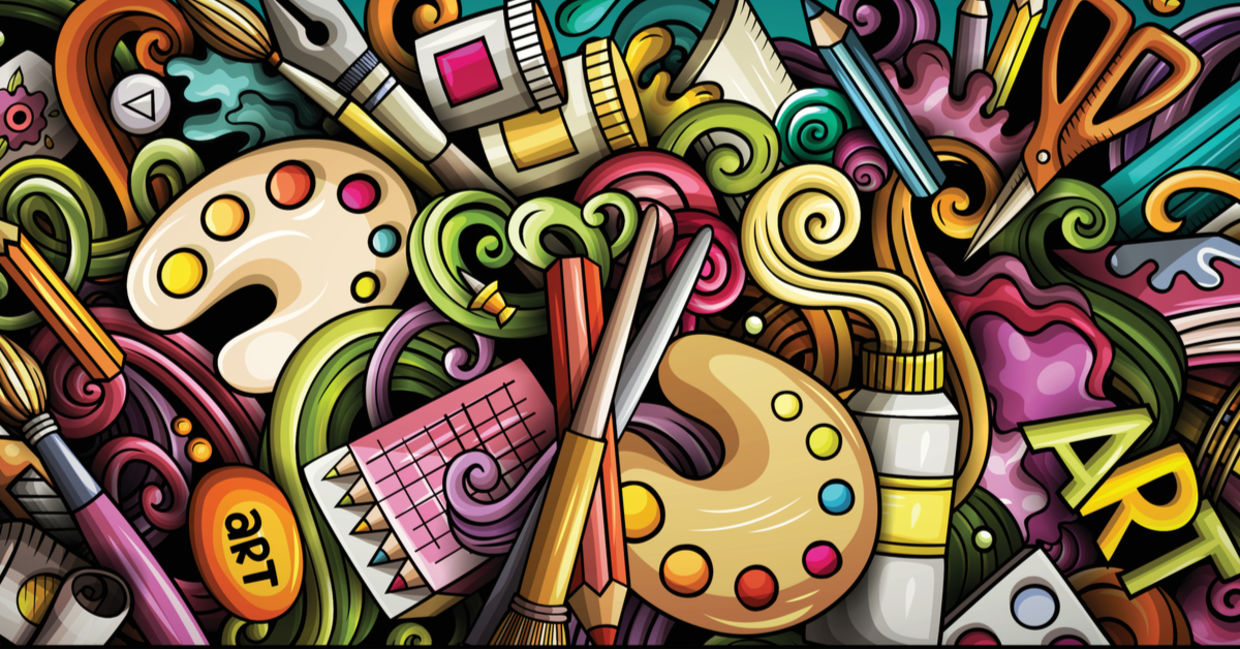
(balabolka / Shutterstock.com)
Making art is an incredible way to relax and let your creative juices flow. Whether you prefer painting, drawing, or even watercolor, art allows you to express yourself and bring your imagination to life. In order to produce your own masterpieces, you must invest in some supplies.
The question that comes to mind is: How family-friendly and safe are the products that you choose? Which are also the best for the environment? Theseconcern has been raised by artists and art suppliers alike and they have identified some excellent substitutions and strategies to promote health and the environment.
There are harmful pigments, solvents, and thinners created by heavy metals in some kinds of paints, according to LiveKindly. These materials can be detrimental, and at times even toxic, for both people and nature. They recommend becoming aware of what exactly is in your paint and to look out for certain pigments, such as cadmium, manganese, ceruleum, and cobalt. These are dangerous metals that may lead to poisoning if used daily.
Michael Skalka, chair of the artists’ materials subcommittee at the American Society for Testing and Materials, told the Artists Network, “the source of pigments is one of the few proprietary issues that manufacturers guard carefully and the question of how and where these substances are extracted is rarely raised by artists.”
A safer choice for cadmium red, orange, and yellow are azo pigments. Although the colors are not as bright, these pigments are much healthier and less-toxic than their cadmium counterparts. The Canadian company Eartheasy offers watercolor paints that are created with aluminum oxide and beeswax. They also sell watercolor pencils that are, “made with reforested wood, or wood that has come from forestry that replants a tree for each one cut down,” according to Artists Network.
In addition to heavy metals, LiveKindly suggests paying attention to plastic that is a typical ingredient within paint, lacquer, glue, and varnish. Plastic can also be listed under the words polyurethane, polyester, silicone, or acrylic. Due to the possibility of plastic in these materials, you should always open the windows when painting or using glue. Make sure to close the jar of turpentine or thinner as you work because you may inhale toxins.
Once you are finished painting, you need to dispose of your dirty water, paint, and materials in an eco friendly manner. If you rinse acrylic paint brushes in the sink, it can leak liquid plastic into the environment. Instead, Artists Network advises you to purchase paints that contain walnut oil. This oil limits the need for harmful solvents when you are cleaning your brushes.
If you are using turpentine, you can place towels soaked in the turpentine in a tightly-sealed jar or container. Along with paint and thinners, this jar can be disposed of as small chemical waste. In order to get rid of solvents, you can place them outside in the sun. Artists Network recommends only evaporating a small amount because this practice is harmful to the air quality.
Next time you are inspired to start a new art project, take a few minutes to look into the materials you choose. Spending a bit of time understanding what supplies you are bringing into your home will make you more eco-conscious and benefit both your family's health and the surrounding environment.
YOU MIGHT ALSO LIKE:
9 DIY Summer Crafts Your Kids Will Love!
Time for DIY: A Perfect Route to Home Decorating on a Budget
9 Famous Museums Offer Digital Tours You Can Take From Home







